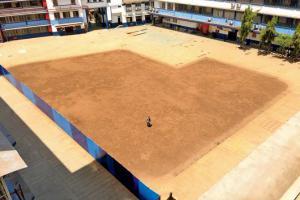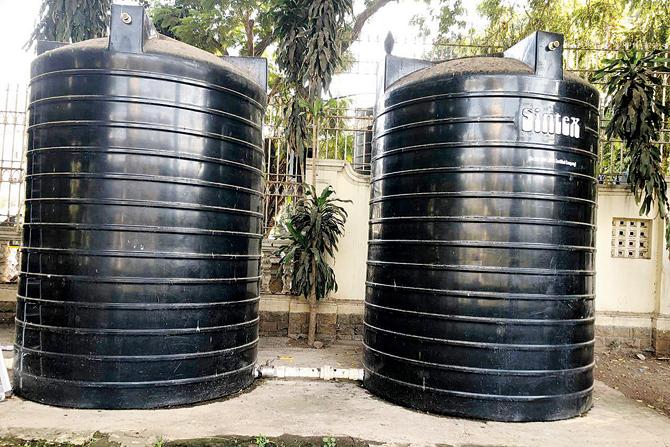While it is mandatory for new buildings to have a rainwater harvesting system, for the rest, century-old structures are showing the way

The underground RWH system in place at IES Dadar
CSMVS, in Kala Ghoda, is a landmark in more ways than one. Apart from its excellent art collection, the building, constructed in 1914, has taken the lead in adopting sustainable practices. In 2008, after a careful appraisal of its water needs, it switched to rainwater harvesting (RWH).
ADVERTISEMENT
"Surface water was inadequate to meet our demands and our groundwater [was depleted]," says Bhavdatt Patel, administrative officer, who has been with the museum since 2014. "Since the museum has a vast landscaped garden, we explored possibilities to utilise rainwater in gardening by installing a RWH system. This would help in conserving BMC-supplied water, using it only for drinking purposes." Installed at a cost '9 lakh, the museum initially put in place two tanks of 5,000 litres each, and later augmented the system to three tanks of 10,000 litres each in 2018. "Today, the RWH system provides 70,000 litres of water each day."

The tanks at CSMVS
In the middle of the city, IES in Dadar, established in 1926, is another institution reaping the benefits of RWH. Satish Nayak, chairman of the school's board, says, "We have a 2.5- lakh-litre water tank, and we have saved at least one-third of our earlier consumption. Every drop of water that is collected on the rooftop in the compound is diverted to a tube well. This is non-potable and used only for flushing." This water is used on a daily basis by nearly 10,000 students. "I thank Nandan Mungekar for guiding us on this."
Mungekar, owner of Dadar-based Mungekar & Associates, is an architect, geologist, town planner, environmentalist and dowser, which deals with pendulum diagnostics. To those looking for RWH solutions, he's also friend, philosopher and guide. "I have been practising rainwater harvesting for more than 25 years." In 1993, he designed an RWH plan for the Ion Exchange Guesthouse at Bhose, near Mahabaleshwar. Since then, he has completed more than 3,000 RWH projects. "The rainwater that falls on your terrace can be harvested. Even the water falling on the ground can be harvested, which can be used throughout the year. So, you can be self-sufficient."

Pic/Bipin Kokate
As per his math, a half-acre plot of land receives 46 lakh litres of water every monsoon. "That is going down the drain. So, who is the loser? God and nature have given you everything, only your pockets have holes in them, and the water is flowing out. You can't allow this water to go out. You just percolate it on your site and retrieve it." Setting up a tank, he estimates, would cost about Rs 2.5 lakh. But, he reasons, "You have to do it once, and it will be in use for the entire life of the building. It is cheap [in the long run]."
The BMC had changed the rules for new construction in 2002, in which a building needs to have an RWH system in place to receive an OC, making it the new normal. "Chennai is the only city that has applied this law to existing buildings also. Everywhere, there's a lobby. How many water tankers are running in Mumbai? More than 4,000. From where are they collecting the water? From the city." So, what will it take to make this mandatory for old buildings as well? "One signature from the chief minister," he says.
An economical system
Rainwater collected on rooftops can be redirected through pipes to a deep pit, which can be a tank, well or borehole. As non-potable water, it can be used for flushing, washing cars and dishes and watering plants, and reduce any structure's dependency on BMC's water supply. It can also be used to restore the groundwater table. Architect Nandan Mungekar says, "It is the most economical system. You can even park your car on top of that, so I don't take even an inch of your space."
Also Read: Water supply: Down to 13 percent, Mumbai is running on reserve
Catch up on all the latest Mumbai news, crime news, current affairs, and also a complete guide on Mumbai from food to things to do and events across the city here. Also download the new mid-day Android and iOS apps to get latest updates
 Subscribe today by clicking the link and stay updated with the latest news!" Click here!
Subscribe today by clicking the link and stay updated with the latest news!" Click here!






